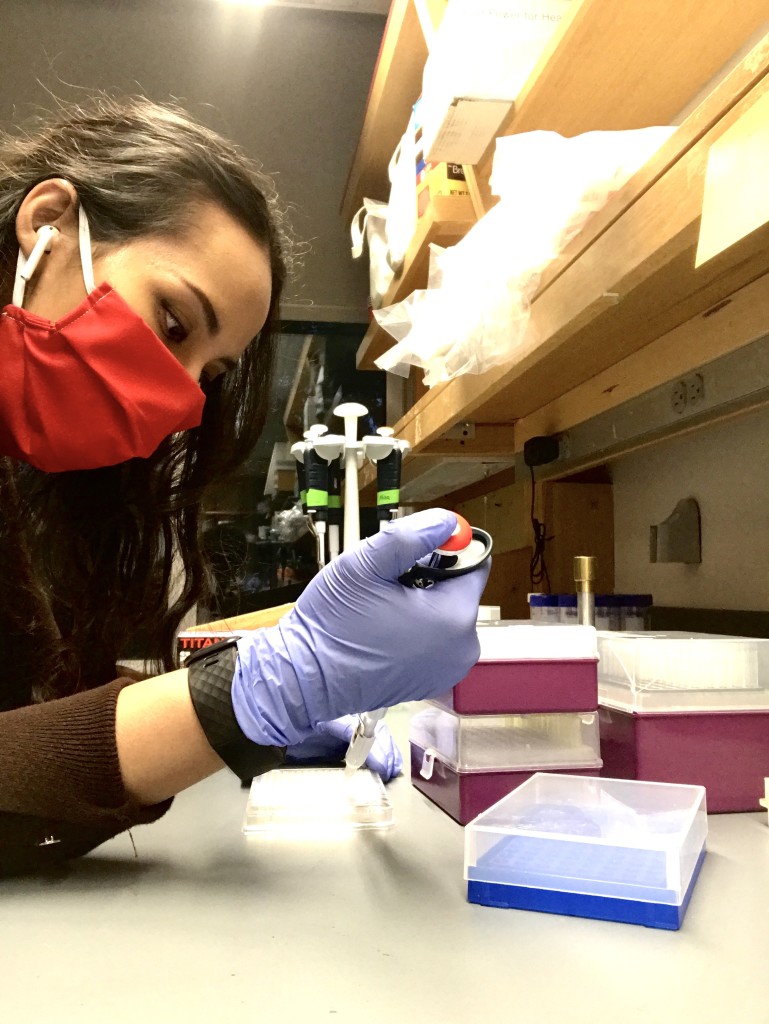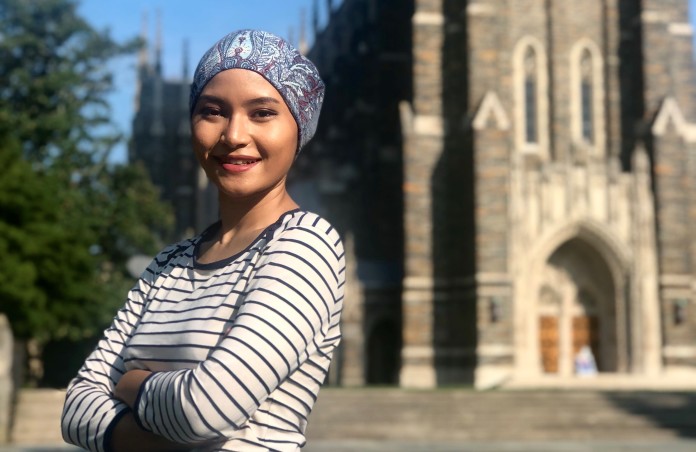A little bit about myself…
I am a rising third-year PhD student in Pharmacology at Duke University in Durham, North Carolina. My research focuses on a type of cellular receptors called G-protein coupled receptors (GPCR) that are implicated in diseases, such as heart failure and asthma. I consider myself very lucky because Duke University is one of the world’s leading research institutions in GPCR biology. For example, in my second year, I had the opportunity to present my work in front of Dr. Robert Lefkowitz, a Duke University professor who was awarded the 2012 Nobel Prize for Chemistry for his groundbreaking discoveries in this field.
I received my Bachelor of Science degree in Biology from New York University Abu Dhabi on full financial aid in 2018. During my undergraduate years, I had the opportunity to study in New York, Abu Dhabi, and Buenos Aires, with shorter stints in London and Berlin. I worked in a molecular biology lab for two years, studying how a protein called nuclear myosin shapes the cellular response to DNA damage, which culminated in a conference presentation in Suzhou, China, and a recent scientific publication. I also had the opportunity to lead my university’s team in an international genetic engineering competition, where we won the gold medal for developing a bacterial pathogen diagnostic device. After graduation, I enrolled directly in Duke’s PhD program.

Overview of what a PhD program in biomedical sciences looks like…
You must be in for the long-haul to enroll in a doctorate program. In the US, the average time to PhD completion in biological and biomedical sciences is ± 5.8 years. Typically, a Master’s degree is not required to enter a US-based PhD program. This means that students can directly be admitted to the program after completing their undergraduate education. Typically, in their first year, students are expected to undergo rotations in different labs to explore the breadth of research that the program offers. At Duke University, this means taking 8-week rotations in three to four labs in the affiliated labs prior to committing to a research group. Students are also expected to complete the required courses prior to taking the qualifying or candidacy exam in their second or third year. After passing the exam, the students become official PhD candidates and will typically perform full-time research duties that culminate in a scientific publication.

What should you look for in a program?
You should find the academic program with the best fit for you. Here are some aspects that I prioritized during my search:
#1. Your funding
In many top-tier institutions, PhD programs in biomedical sciences ensure full funding and a stipend for their students. PhD programs may grant research fellowship, teaching assistantship, or a combination thereof to fund their students. For example, at Duke University, I receive a full academic tuition scholarship, health insurance, and a yearly stipend of $32,400 (as of the 2020-2021 academic year). Therefore, I did not have to find external scholarships to fund my studies. However, the financial situation may look different depending on the institution. I advise that you aim for fully funded programs, or seek external funding for a doctorate degree such as the Fulbright fellowship and the LPDP scholarship.
#2. Academic fit, environment, and research funding
Since I will be spending the majority of my doctorate education doing scientific research, I spent a lot of time thinking about what big questions I want to answer. I researched each university’s website and narrowed down my list of schools to those that have a proven track in my field of interest. Research funding is also a good proxy for how well-supported the program is. Many biomedical research programs in the United States are supported by the National Institute of Health. You can see the list of NIH-funded universities through this website.
#3. Location and cost of living
Going into the application process, I had known that I wanted to be able to live on my own and afford a comfortable lifestyle. PhD stipend in biomedical sciences could range between $20,000 – $40,000 depending on location. However, in some of the most expensive cities in the US, a higher stipend may not stretch as far as you think. For example, it is almost impossible to live on your own on a PhD stipend in places like New York, Boston, and San Francisco. Plus, some schools may not guarantee housing for the duration of your degree, which is perhaps one of the biggest financial expenses. I carefully considered the price of housing and general living cost for each of the schools I got accepted to. In the end, I chose Duke University in North Carolina’s Research Triangle Area, where biotechnology and pharmaceutical industries flourish and the cost of living is 11% lower than the national average.
#4. Community and work-life balance
Importantly, you should find an environment where you can achieve your ideal work-life balance. I chose Duke because the admitted cohort is typically smaller than other universities, meaning that I can build more meaningful connections with other graduate students in my program.

How should you prepare?
For my applications, I had to submit my GRE scores, a personal statement, and a research document. Some programs may ask for one integrated document while others may ask separate texts. In my personal statement, I detailed how my background and academic experiences have motivated and prepared me for graduate education in biology. In addition, I elaborated on my career goals and what I hope to achieve from this doctorate degree. The research document, however, has a different focus. In this document, in addition to writing about my research background, awards, and scientific publications, I also explained how these experiences have shaped my critical thinking ability. With these projects, I stated the critical gap in our knowledge, outlined my scientific approaches, and explained how my findings bridged this gap. Not only was I able to demonstrate not my excitement for research, but I could also mention the specific fields and research groups in that university that I am interested in joining during my graduate school career. This is important because “research fit” is considered an important metric in the admissions process. For example, does the university have research groups that tackle the questions you want to answer? Does the university have the appropriate research support?
If the admissions committee is impressed by your application materials, most PhD programs will invite you for an on-campus interview. Many PhD programs will offer some amount of financial aid for your travel. For example, because flights between Abu Dhabi and New York were relatively affordable, I was able to travel to interview on-site, which really helped me to decide in the end. Otherwise, PhD programs will also conduct virtual interviews (e.g. via Skype), although the format of these interviews may differ between universities. This is an opportunity for you to talk to professors and current students in that program, and for them to learn about your academic fit in that environment.
It is my personal mission to diversify and increase access to biomedical sciences PhD programs. As always, my e-mail is open if you are seeking advice or want to know more about my experience navigating the PhD admissions process and my day-to-day life as a molecular biology graduate student.







